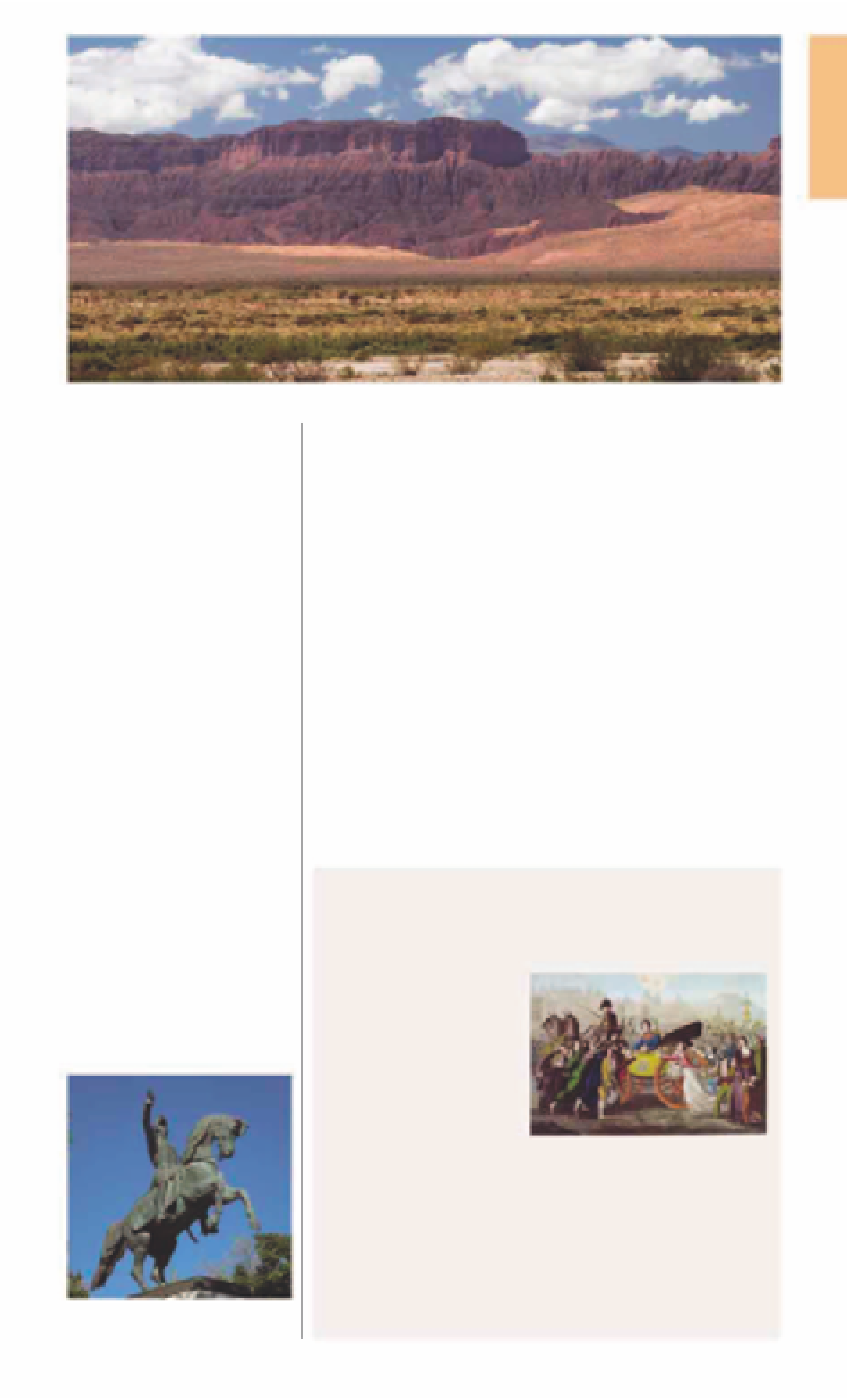Travel Reference
In-Depth Information
Stunning red clifs at Parque Nacional Talampaya, weathered by millennia of wind and rain
0
Parque Nacional
Talampaya
Road map
B2. 135 miles (216 km) SW
of La Rioja.
n
L. N. Acem s/n, (03825)
470-356.
@
Open
May−Sep:
8:30am−5:30pm daily; Oct−Apr:
8am−6pm daily.
&
8
∑
tampalaya.gov.ar
Designated a national park
by President Menem in 1997,
Parque Nacional Talampaya is
also a UNESCO World Heritage
Site. Its name comes from the
indigenous words
ktala
(the
local
tala
bush), and
ampaya
(dry riverbed). The park
covers an area of 97 sq miles
(251 sq km) and contains some
of Argentina's most amazing
natural features, including
square, is the neo-colonial
government building, Casa de
Gobierno, and to the south,
Catedral San Nicolás de Bari
,
which contains a 17th-century
image of the saint, carved from
walnut wood.
Iglesia Santo
Domingo
, one block east of the
plaza, dates from 1623 and is
said to be the oldest building in
Argentina. Its highlights include
the carob-wood doors, carved
by indigenous artisans in the
17th century. Located west of
the plaza,
Museo Folklórico
is a
superbly organized reconstruc-
tion of a Victorian Riojano
dwelling, packed with hand-
carved furnishings and gaucho
gear. It also has a display on
local myths and legends.
sheer sandstone cliffs that
soar up to 590 ft (180 m) from
the plain. Millions of years of
torrential rain and dry, gritty
winds have sculpted the cliffs
into fantastic shapes, their
anthro pomorphic qualities
earning them imaginative
nicknames such as The
Monk and The Three Kings.
Apart from the rock formations,
guides can also point visitors
towards pre-Columbian
glyphs scratched into the
cliff faces and patches of
rare flora. Condors and eagles
glide majestically overhead.
Apart from the wind and
the occasional bird cry, the
predominant sound is one
of silence.
R
Iglesia Santo Domingo
Lamadrid 111.
Open
9am-12:30pm,
6-10pm Mon-Sat; mornings only Sun.
8
7
E
Museo Folklórico
Pelagio B Luna 811.
Te l
(03822) 428-
500.
Open
9am-1pm, 4-8pm Tue-Fri,
9am-1pm Sat & Sun.
&
8
7
-
=
The Legend of Facundo Quiroga
One of the most famed and feared of Argentina's early 19th-century
gaucho chieftains, Juan Facundo Quiroga (1790-1835) was born
into a poor family of cattle
breeders. He was nicknamed
“the tiger of the plains” by his
friends and enemies alike.
Quiroga fought briefly in the
revolutionary wars before
rising quickly to the head of
the Andean provincial armies.
When his de facto military
rule came under threat from
the Centralist forces of
President Rivadavia, who
had established a “Unitarian”
constitution in 1826, Quiroga led his Federalist army through a series
of victories and defeats until finally beating the Centralist army in Salta.
In 1934, while en route to Buenos Aires after a mission in the northern
provinces, he was ambushed and murdered by gunmen. Facundo's
lasting fame owes as much to his biographer, writer and statesman
Domingo Sarmiento, as to his own infamous achievements.
19th-century lithograph of Quiroga greeted
by supporters
Statue of San Martín at La Rioja's Plaza 25
de Mayo


































